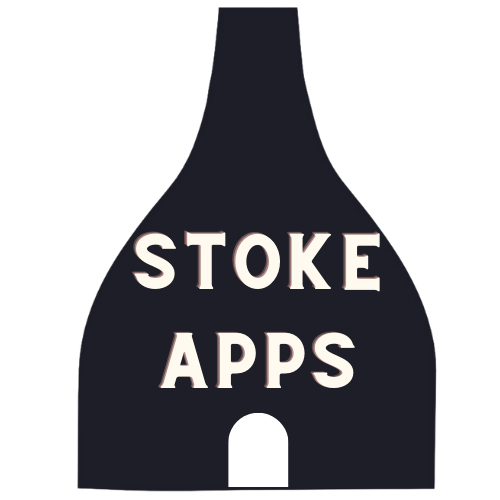Xamarin to Maui: the Migration That’s Turning CTOS Into Heroes
Migrating from Xamarin to MAUI puts you on the path to becoming a technological hero. With MAUI’s unified project structure and cross-platform capabilities, you’ll streamline development, reduce overhead, and enhance app performance. Leveraging .NET 6 and C# 10, MAUI supports modern features and guarantees a consistent user experience across devices. You’ll find deployment and debugging more straightforward, and the adaptability of the UI framework lets you design richer interfaces. By embracing MAUI, you’ll make your projects more scalable and maintainable while keeping costs in cheque. Explore further and see how this migration could be your next big success.
Key Takeaways
- Unified Project Structure: MAUI’s single project architecture simplifies development, reducing overhead and making CTOs’ workflows more efficient.
- Enhanced Performance: Migration to MAUI leverages .NET 6 and C# 10, resulting in improved app performance and scalability.
- Cost Efficiency: A unified framework minimises platform-specific code, reducing development and maintenance costs.
- Consistent User Experience: MAUI’s adaptive design ensures consistent UI and user experience across multiple devices, enhancing customer satisfaction.
- Simplified Deployment: MAUI offers a streamlined deployment and debugging process, making it easier for CTOs to manage and release applications effectively.
Understanding Xamarin and MAUI

If you’re looking to port your mobile applications, understanding the core differences and enhancements between Xamarin and MAUI is crucial. Xamarin has been a solid choice for cross-platform development, leveraging a shared codebase to build iOS and Android applications simultaneously. It uses the Xamarin architecture, which consists of Xamarin.iOS and Xamarin.Android, both sitting atop a .NET layer that communicates with native APIs through bindings. This approach allows you to write a significant portion of your app’s code in C#, while the platform-specific layers handle the unique aspects of each operating system.
However, bringing your apps to the next level involves exploring the enhancements that MAUI (Multi-platform App UI) offers. MAUI is fundamentally the evolution of Xamarin.Forms, designed to simplify and enhance the development process. One of the standout MAUI features is its single project architecture. Unlike Xamarin, where you manage separate projects for each platform, MAUI consolidates everything into one project, streamlining your workflow and reducing overhead.
Moreover, MAUI introduces a more integrated approach to UI development. It allows you to create a single user interface that adapts to different devices and screen sizes seamlessly. This is achieved through the use of a unified API and enhanced tooling, making it easier to implement responsive designs.
Additionally, MAUI supports Blazor, enabling you to reuse web components within your mobile applications.
Key Differences Between Xamarin and MAUI

When migrating from Xamarin to MAUI, you’ll immediately notice the streamlined single project architecture that eliminates the need for separate platform-specific projects. This major shift not only simplifies your development process but also reduces redundancy and potential errors. Instead of maintaining multiple projects for iOS, Android, and other platforms, you now have a unified project structure, which is a significant MAUI advantage.
One of the most striking differences between Xamarin features and MAUI is the enhanced cross-platform capabilities. MAUI leverages a single codebase to deliver consistent UI and behaviour across all supported platforms. This contrasts sharply with Xamarin, where you often had to write platform-specific code to achieve the same result. With MAUI, the use of .NET 6 and C# 10 brings modern language features and performance improvements, making your applications faster and more efficient.
MAUI also introduces a more flexible and powerful UI framework. While Xamarin.Forms provided a solid foundation, MAUI extends it by offering a more detailed and customisable toolkit. You can now create richer, more interactive user interfaces with less code. Additionally, MAUI’s new Blazor integration allows you to build hybrid apps, combining web and native technologies seamlessly.
Another essential difference lies in the deployment and debugging experience. MAUI’s single project system simplifies deployment pipelines, making continuous integration and delivery more straightforward. Debugging is also more cohesive, as you can set breakpoints and debug across platforms in a unified environment.
Benefits of Migrating to MAUI

Migrating to MAUI offers numerous benefits that enhance efficiency, streamline development, and elevate the overall user experience in cross-platform applications. By adopting MAUI, you can achieve significant cost savings due to its unified framework, which minimises the need for platform-specific code and reduces the complexity of your projects. This leads directly to increased efficiency and developer productivity, as your team can focus on building robust features rather than managing multiple codebases.
MAUI’s modern architecture is designed for long-term scalability, guaranteeing that your applications can evolve seamlessly as new technologies and requirements emerge. With simplified maintenance, you can easily update and manage your applications, reducing the time and effort needed for ongoing support. The adaptive design capabilities of MAUI allow your applications to look and perform efficiently across different devices and screen sizes, providing a consistent user experience.
Enhanced security features are another critical advantage of migrating to MAUI. The framework incorporates advanced security protocols, helping to safeguard your applications against potential threats. This guarantees that both your data and your users’ data remain protected.
Community support is robust with MAUI, offering a wealth of resources, forums, and third-party tools to assist you in your development journey. This vibrant community can be a valuable asset, providing insights, troubleshooting tips, and code samples that can help you overcome challenges more quickly.
Preparing for the Migration

To capitalise on the benefits of migrating to MAUI, you’ll need to meticulously prepare your existing Xamarin projects to guaranty a smooth migration process.
Start by establishing a well-defined migration timeline. Break down the entire migration into phases, each with specific milestones, to make sure you stay on track. This timeline won’t only help you manage expectations but also allow you to allocate resources efficiently.
Before diving into the migration, conduct a thorough audit of your existing Xamarin projects. Identify areas of code that may need refactoring to aline with MAUI’s architecture. This step is essential to avoid unexpected roadblocks later. Verify that all third-party libraries and dependencies are compatible with MAUI, or have suitable alternatives ready.
Resource allocation is key to a successful migration. Assemble a dedicated team with a mix of Xamarin and MAUI expertise. This blend of skills will help mitigate issues quickly and guaranty a seamless shift. Don’t underestimate the importance of training; invest in upskilling your team on MAUI’s new features and best practises.
Testing can’t be overlooked. Develop a thorough testing strategy that covers unit, integration, and performance tests. Leverage automated testing tools to expedite this process and maintain high code quality throughout the migration.
Lastly, prepare your stakeholders by communicating the migration timeline and resource allocation plan. Keep them informed about potential risks and mitigation strategies to secure their support and understanding. By taking these preparatory steps, you’ll set the stage for a successful migration, transforming your Xamarin projects into robust, future-ready MAUI applications.
Step-by-Step Migration Process

Initiate the migration process by updating your development environment to support MAUI, guaranteeing compatibility with your current toolset.
Begin by installing the latest version of Visual Studio 2022, which fully supports .NET MAUI. This step prepares your IDE for the migration journey.
Next, focus on migration strategies that aline with your project’s complexity and goals. Start by analysing your existing Xamarin.Forms codebase. Identify components that have direct counterparts in MAUI, such as UI elements and navigation patterns.
Create a migration plan that prioritises these elements, allowing you to leverage MAUI’s enhanced performance and capabilities early in the process.
Code refactoring is a critical part of this migration. Begin by updating your project files to adhere to MAUI’s new project structure. Replace Xamarin.Forms namespaces with MAUI equivalents.
This might seem overwhelming initially, but it’s a necessary step to guaranty smooth functionality and to take advantage of MAUI’s cross-platform capabilities.
As you proceed, incrementally test your application using MAUI’s hot reload feature. This allows you to catch and correct issues in real-time, ensuring that each refactored component functions as expected.
By adopting a phased migration strategy, you minimise disruptions and maintain application stability.
Don’t forget to update dependencies and third-party libraries to their MAUI-compatible versions. This guarantees that your entire ecosystem is in synch with the new platform, reducing potential compatibility issues.
Common Challenges and Solutions

As you migrate from Xamarin to Maui, you’ll encounter common challenges like ensuring legacy code compatibility and optimising performance.
Addressing these issues requires a strategic approach to refactor outdated code and implement efficient performance enhancements.
Let’s explore effective solutions to tackle these hurdles seamlessly.
Legacy Code Compatibility
When migrating from Xamarin to Maui, one of the most significant challenges you’ll face is guaranteeing legacy code remains compatible with the new framework. Legacy code strategies are essential in minimising the migration impact. Start by conducting a thorough audit of your existing codebase. Identify components that are tightly coupled with Xamarin-specific APIs and assess their compatibility with Maui.
Next, consider establishing a phased migration approach. This allows you to incrementally port parts of your application while maintaining functional stability. You can create compatibility layers or use bridging code to guaranty older components work seamlessly with Maui.
Another effective strategy is to leverage abstraction. By abstracting platform-specific functionalities, you can isolate dependencies and make your code more adaptable. Refactoring your code to use dependency injection will further enhance modularity and testability, making the shift smoother.
Lastly, don’t overlook the importance of thorough testing. Automated tests should cover both legacy and newly migrated code to catch any regressions early. Unit tests, integration tests, and UI tests will help validate that your application’s behaviour remains consistent throughout the migration process.
Performance Optimisation Strategies
Having confirmed your legacy code is compatible with Maui, the next logical step is to address performance optimisation strategies to tackle common challenges and implement effective solutions. Performance optimisation is critical for guaranteeing a smooth user experience and maintaining application responsiveness.
Here are four key strategies:
-
Memory Management: Efficient memory usage can drastically improve your app’s performance. Implementing proper disposal patterns for unmanaged resources, using weak references, and avoiding memory leaks by leveraging tools like the Xamarin Profiler will help you manage memory effectively.
-
Threading Optimisation: Proper threading can enhance your app’s responsiveness. Utilise Maui’s asynchronous programing capabilities with
asyncandawaitto keep the UI thread free. Offload heavy processing to background threads usingTask.Runand confirm thread safety with synchronisation contexts. -
Lazy Loading: Only load resources when they’re needed. This strategy reduces initial load times and memory consumption. You can implement lazy loading for images, data, and other heavy resources to enhance performance.
-
Profiling and Monitoring: Regularly profile your application to identify bottlenecks. Use tools like the .NET MAUI Profiler to monitor CPU, memory, and threading performance. Consistent profiling helps you pinpoint inefficiencies and optimise accordingly.
Tools to Aid the Migration

Leverage essential tools like the .NET Upgrade Assistant and Maui Migration Analyser to streamline your change from Xamarin to Maui. These migration tools are designed to simplify the complex task of moving from Xamarin to the more advanced Maui framework, guaranteeing a smoother shift. When you use these tools, you’re not just migrating code; you’re also adopting integration strategies that can enhance your application’s performance and expand its capabilities.
The .NET Upgrade Assistant is a must-have. It automates much of the migration process, identifying and updating code segments that need modification. This tool reduces manual effort, making the upgrade less error-prone. Complementing it is the Maui Migration Analyser, which provides detailed insights into your project’s readiness for migration. This tool evaluates your current Xamarin application, pinpointing areas that require attention and suggesting best practises for a successful shift.
Here’s a quick comparison of these two essential tools:
| Tool | Key Features |
|---|---|
| .NET Upgrade Assistant | Automates code updates, reduces manual errors, and improves migration speed. |
| Maui Migration Analyser | Analyses project readiness, offers detailed reports, and suggests best practises. |
| Xamarin Essentials | Provides cross-platform APIs for native device features. |
| Maui Compatibility Pack | Guarantees backward compatibility with existing Xamarin code. |
| Visual Studio | Integrated IDE support for both Xamarin and Maui, with debugging tools. |
Using these tools effectively requires an understanding of their features and how they interoperate. Integrating them into your workflow can dramatically reduce the complexity and duration of the migration process. By leveraging these migration tools, you’re setting up your team for success, guaranteeing that your move to Maui isn’t just a step forward, but a leap towards more robust and scalable applications.
Case Studies of Successful Migrations

Several leading companies have successfully navigated the shift from Xamarin to Maui, demonstrating the tangible benefits and improved performance of the newer framework. These real-world examples highlight key success stories, showing how team collaboration and meticulous migration planning can lead to remarkable outcomes.
-
FinTech Innovators: One prominent financial technology firm saw a 20% improvement in app performance metrics post-migration. Their success was attributed to rigorous migration planning and constant stakeholder engagement, ensuring alinement with strategic benefits. User feedback indicated a smoother, more responsive interface, boosting customer satisfaction.
-
Healthcare Providers: A major healthcare provider converted their patient management app to Maui, achieving a 25% reduction in load times. This migration was a reflection of effective team collaboration, where developers, UX designers, and IT staff worked in harmony. The performance metrics clearly depicted enhanced efficiency, and user feedback was overwhelmingly positive, praising the app’s new features and reliability.
-
Retail Giants: In the retail sector, a global retailer revamped their inventory management system using Maui. The migration led to a 30% increase in operational speed, greatly improving the user experience for store managers. The project’s success hinged on diligent migration planning and continuous stakeholder engagement, alining the technical upgrade with the company’s strategic goals.
-
Educational Institutions: A leading university migrated its campus navigation app to Maui, resulting in a 15% boost in performance metrics. This success story highlights the importance of team collaboration, where IT and academic staff worked together to meet the needs of students and faculty. User feedback underscored the app’s enhanced useability and faster response times.
These case studies underscore the strategic benefits of migrating to Maui, showcasing how thorough planning and collaborative efforts lead to superior performance and user satisfaction.
Best Practises for Using MAUI

To guaranty peak performance and maintainability when using MAUI, prioritise a modular architecture that facilitates code reusability and scalability. By breaking down your application into smaller, manageable modules, you’ll find it easier to maintain, test, and extend your codebase. Here are some best practises and development tips to keep in mind:
- Adopt MVVM Pattern: Utilise the Model-View-ViewModel (MVVM) pattern to separate your business logic from the UI. This separation helps in maintaining a clean codebase and enhances testability.
- Optimise Resource Usage: Efficient resource management is essential. Make use of lazy loading for images and data to improve performance and reduce memory footprint.
- Leverage Dependency Injection: Implement dependency injection to manage your services and dependencies. This approach improves modularity and makes your code more testable.
- Utilise Cross-Platform Libraries: Take advantage of cross-platform libraries to avoid reinventing the wheel. Libraries like Prism for MVVM, ReactiveUI, and others can greatly reduce development time.
Here’s a quick reference table to visualise some best practises:
| Best Practise | Description |
|---|---|
| MVVM Pattern | Separates business logic from the UI for cleaner code |
| Optimise Resource Usage | Use lazy loading to enhance performance and reduce memory |
| Dependency Injection | Manages services and dependencies for better modularity |
| Cross-Platform Libraries | Utilise existing libraries to save time and effort |
Future Prospects With MAUI

As you look ahead with MAUI, expect to see an expanding app ecosystem that leverages enhanced user experiences and cross-platform innovations.
You’ll find that MAUI’s capabilities position it to revolutionise the way you develop and deploy applications.
This evolution promises not only to streamline your workflow but also to open new possibilities for creative and efficient solutions.
Expanding App Ecosystem
MAUI’s unified codebase promises to streamline your development process, enabling you to expand your app ecosystem more efficiently than ever before. By leveraging MAUI, you can create a diverse range of applications that cater to multiple platforms, all from a single codebase. This shift not only simplifies maintenance but also accelerates ecosystem growth, allowing you to focus on innovation rather than repetitive coding tasks.
Consider how MAUI can transform your app development strategy:
-
Cross-Platform Compatibility: Write once, deploy everywhere. MAUI allows you to target iOS, Android, Windows, and macOS without reinventing the wheel for each platform.
-
Component Reusability: Reuse your components and logic across different projects, ensuring consistency and reducing development time.
-
Scalability: Easily scale your applications to include new features or support additional platforms, thereby facilitating ecosystem growth and app diversity.
-
Integrated Tools: Benefit from a robust set of integrated tools and libraries that streamline debugging, testing, and deployment processes.
Enhanced User Experience
Harnessing the power of MAUI, you can revolutionise your app’s user experience with enhanced performance, seamless interface design, and intuitive navigation.
MAUI’s advanced capabilities provide a solid foundation for user interface enhancements that make your app not only visually appealing but also highly responsive. By leveraging MAUI’s unified framework, you get access to a plethora of tools and components designed to streamline UI development, guaranteeing your users enjoy a smooth, cohesive experience across devices.
User engagement strategies become more effective when the UI is intuitive and responsive. MAUI allows you to implement sophisticated animations, fluid shifts, and adaptive layouts, making interactions more engaging and reducing user friction. The framework’s performance optimisations ensure that your app runs smoothly, minimising load times and enhancing overall user satisfaction.
Additionally, MAUI’s built-in support for accessibility features guarantees that your app is useable by everyone, expanding your audience and boosting engagement. By capitalising on these user interface enhancements, you can create a compelling, memorable user experience that keeps users coming back.
Fundamentally, MAUI equips you with the tools to develop apps that not only meet but exceed user expectations, transforming your vision into a reality.
Cross-Platform Innovations
How can the innovative cross-platform capabilities of MAUI shape the future of app development?
MAUI (Multiplatform App UI) presents a significant leap in cross-platform development, simplifying the creation of applications that run seamlessly across iOS, Android, Windows, and macOS. By leveraging MAUI, you can streamline your development process, reduce costs, and increase productivity. Here’s how:
-
Unified Codebase: With MAUI, you write your app’s code once and deploy it across multiple platforms. This reduces redundancy and guarantees consistency in your app’s functionality and design.
-
Enhanced Performance: MAUI optimises performance across different operating systems, guaranteeing that your app runs smoothly and efficiently, regardless of the platform.
-
Rich UI/UX: MAUI offers powerful tools and libraries to create engaging and intuitive user interfaces. You can maintain a high-quality user experience across all platforms without additional overhead.
-
Robust Integration: MAUI seamlessly integrates with various mobile app frameworks, making it easier to implement advanced features and third-party services.
Conclusion
Imagine your team effortlessly shifting from Xamarin to MAUI, much like TechCorp did, reducing their app maintenance time by 30%.
By leveraging MAUI’s robust features and streamlined processes, you’re not just keeping up with technology; you’re leading the charge.
Equip yourself with the right tools, follow best practises, and soon, you’ll be celebrating a seamless transfer that propels your company forward.
Ready to turn this transfer into your success story? The future with MAUI is here.
Contact us to discuss our services now!
